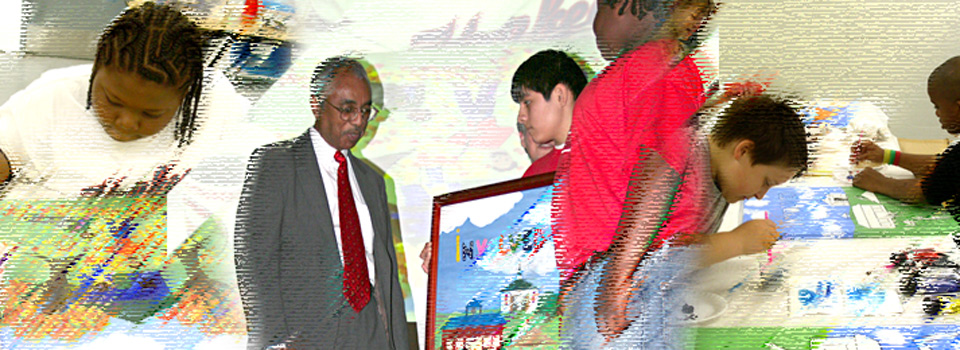Tre’ Ross, Bodhi Roberts and Noe Recendiz took the stage in front of several hundred UGA faculty and staff. The middle school boys stared at their feet and glanced occasionally at the crowd before presenting their boldly colored painting, centered on the word “Involved,” to a group of UGA deans.
Three years ago, they wouldn’t have had this opportunity. Three years ago, they were constantly getting into trouble, and BOYS (Building Our Youth’s Skills) didn’t exist.
BOYS is a program designed specifically for struggling middle school boys, said Mary White, a UGA Cooperative Extension agent. Its aim is to make sure these boys are promoted to the next grade level on time and that they develop social, behavioral and independent living skills.
“It’s very gratifying,” said Booker T. Hobbs, who leads the Candler County, Ga., BOYS program, along with Ken Dekle. “You see it in their eyes that you’re making a difference in their lives. It’s very satisfying.”
Off the stage, Ross, Roberts and Recendiz opened up to questioning slowly. Recendiz, a sixth-grader, said his favorite thing about the BOYS program was “meeting new people — actually, everything about BOYS.”
Ross, also a sixth-grader, loves the trips. Roberts, a seventh-grader, enjoys playing sports.
Before they were introduced to the BOYS program, many of the students had never traveled outside Candler County. Now they’ve gone to Rock Eagle 4-H Center in Eatonton, Ga., a UGA basketball game, a Georgia Southern University football game, a Savannah Sand Gnats baseball game and an ice-skating rink.
It’s not all fun and trips. “We’re busy after school,” he said. “Mr. Booker stays on us about our homework.”
The project started in Candler County in May 2003, when White received a $250,000 Children, Youth and Families-at-Risk grant from the U.S. Department of Agriculture Cooperative State Research, Education and Extension Service. The grant continues through 2008.
The program began with 34 fourth- and fifth-grade boys and now has 45 fifth- through seventh-graders.
For some of these boys, the program is the first place they’ve had someone use the word college in a sentence connected to them, Gibson said. “When we hear ‘When I graduate from high school, this is what I want to do,’ we’re a success.”
The community, Gibson said, identified the need for the BOYS program. They have also started a separate program, GIRLS (Gaining Important Real-Life Skills).
“We’re developing whole males and whole females,” Gibson said. “They’re expected to perform. These expectations are not out of reach. The final success is graduating from high school, not becoming fathers or mothers in their teens, giving them the opportunity to go on to college.”
